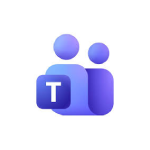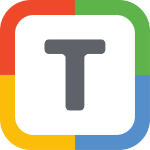List of Best Collaboration Software
Showing 10 of 280 productsMicrosoft Teams is a collaboration tool for any team. With its seamless integration of chat, video conferencing, file sharing, and more, Teams streamlines communication and boosts productivity. Say goodbye to endless email chains and scattered inform...Read Microsoft Teams Reviews
PortalCMS, the ultimate website management and content creation solution. Seamlessly navigate and update your site with ease, while enjoying time-saving features and customizable options to fit your unique needs. Streamline your digital presence with...Read PortalCMS Reviews
Zoho Workplace offers a solution that covers the core aspect of any business—collaboration and communication. It comes bundled with a collaborative office suite of apps that allows the users to create amazing documents, powerful presentations, and...Read Zoho Workplace Reviews
IBM Notes is a software designed by IBM to help businesses improve their communication, collaboration, and productivity. With its robust features and user-friendly interface, IBM Notes has become a preferred choice for organizations of all sizes. Let...Read IBM Notes Reviews
Titan Workspace is an app for Microsoft Teams that serves as a Digital Workplace, streamlining the use of Office365. As a Microsoft Teams App, Titan Workspace offers a range of ready-to-use capabilities aimed at boosting the adoption of both Office36...Read Titan Workspace Reviews
BlueJeans is a and versatile video conferencing platform that allows teams to connect, collaborate, and communicate seamlessly. With features such as HD video, screen sharing, and live chat, BlueJeans makes remote meetings and virtual events feel as...Read BlueJeans Reviews
Monday.com is more than just a project management tool - its a dynamic platform that enhances productivity and collaboration within teams. With its user-friendly interface and customizable features, Monday.com streamlines processes and empowers indiv...Read Monday com Reviews
Miro, the innovative solution for seamless collaboration and visualizing ideas. With its user-friendly interface and powerful features, Miro helps teams communicate, brainstorm and plan projects in a dynamic is a manner. Say goodbye to scattered idea...Read Miro Reviews
TeamGantt is a project management tool designed to streamline team collaborations and increase productivity. With its intuitive interface and robust features, TeamGantt helps teams of all sizes effectively plan, manage, and track their projects from...Read TeamGantt Reviews
FreshBooks account management software simplifies your financial responsibilities and ensures speedy and safe performance. Easily generate invoices, monitor time, and record expenses within minutes. We are dedicated to delivering exceptional customer...Read FreshBooks Reviews
- What Is Collaboration Software?
- Top Reasons Why Businesses Need Collaboration Software?
- What Are the Top Key Features of Collaboration Software?
- What Are the Top Benefits of Collaboration Software?
- What Are the Steps to Choose the Right Collaboration Software?
- What Are the Types of Collaboration Software for Different Industries?
- What Are the Technology Trends for Best Collaboration Software?
- What Are the Deployment Options for Collaboration Software?
What Is Collaboration Software?
Collaboration software is a type of technology that allows teams to collaborate in a safe, synchronised environment. It can be used for communication, data storage, project collaboration, and other purposes. Top online collaboration tools is intended to assist teams in efficiently creating, sharing, and managing information and tasks.
Collaborative software has several advantages, including greater communication among team members, increased project visibility, improved workflows and productivity, improved information organisation and storage, and reduced time and expenditure in collaborative activities.
Teams can communicate in a variety of ways by using best online collaboration tools. Messaging, video conferencing, and file sharing are all examples of this. It enables team members to monitor one another's work in real time, ask questions, provide feedback, and make real-time adjustments without needing to meet in person.
Online collaboration software also aids in the organisation and management of papers and tasks. Projects can be tracked, and their progress can be tracked. Data may be securely saved and exchanged, protecting the security of important files and information.
Overall, best collaboration tools is an effective tool for bringing people together, sharing ideas, and working together to complete projects quickly. As more collaboration systems transition to remote working environments, it has become increasingly crucial.
Top Reasons Why Businesses Need Collaboration Software?
1. Enhances communication between employees - Online collaboration software enables employees to communicate quickly and efficiently, and it aids in talks requiring input from numerous parties.
2. Increases productivity - Best online collaboration tools can assist enhance the way team members collaborate by helping them to develop a more effective workflow by allowing everyone to instantly access papers, updates, and information.
3. Saves time - Businesses can save time by lowering the number of meetings required and allowing employees to hold virtual meetings using top collaboration tools.
4. Shares information quickly - Through the collaboration systems, team members may simply share and exchange documents, tasks, and information.
5. Helps to keep everyone on the same page - Best collaboration tools keep team members informed about company milestones and goals, as well as changes that may occur.
6. Improves decision making - Team members can simply submit issues, propose solutions, and get comments from colleagues, which aids in decision making.
7. Increases team visibility - Team members may readily examine and track the progress of assignments and projects using top collaboration tools.
8. Increases collaboration between teams - Online collaboration software can make it easier for diverse teams to collaborate on a single project, even if team members are scattered throughout the country.
9. Increases customer satisfaction - Customers can easily engage in projects and have their demands answered in a timely manner by using collaboration tools.
10. Boosts employee morale - Cloud based collaboration software promotes teamwork and provides a platform for employees to engage outside of the office.
11. Improves visibility - When employing best online collaboration tools, participants have access to improved graphics, allowing them to more properly monitor their efforts.
12. Stays organized - Users may effortlessly track conversations, deadlines, and actions with the cloud based collaboration software.
13. Increases accountability - Teams can be held accountable for their responsibilities via collaborative software.
14. Improves innovation - Online collaboration software provides employees with the platform they need to discuss ideas and come up with new solutions.
15. Builds relationships - Best collaboration tools bridges the distance between offices and fosters interactions among team members.
What Are the Top Key Features of Collaboration Software?
The top key features of collaboration software include:
1. File sharing: Top collaboration tools enables users to upload, download, and edit files in real time while remaining secure.
2. Instant messaging: This feature enables users to rapidly communicate with colleagues and team members in a safe environment.
3. Calendar and scheduling: Users can use this feature to keep track of events on a shared calendar as well as arrange meetings and appointments.
4. Video conferencing: This enables users to hold real-time online meetings with voice, video, and messaging features.
5. Team management: Users can use this functionality to assign tasks, manage team responsibilities, allocate resources, and check project progress and status updates.
6. Task management: This feature enables users to assign tasks, prioritise activities, and track task progress and completion in a collaborative setting.
7. Document collaboration: Users can upload documents, collaborate on them in real time, and keep track of versions and revisions with this functionality.
8. Online whiteboarding: Users can utilise this functionality to swiftly sketch ideas, collaborate on drawings, and participate in brainstorming initiatives.
What Are the Top Benefits of Collaboration Software?
1. Increased Productivity: Collaboration software boosts productivity by improving communication and processes, avoiding duplication of effort, and increasing efficiency in a wide range of jobs.
2. Improved Team Cohesiveness: Online collaboration software enables teams to effectively communicate, overcoming physical isolation and improving communication. This leads to better team cohesion and job satisfaction.
3. Enhanced Document Management: The best collaboration tools allows for the safe sharing of documents, data, and information. This helps to retain control and visibility throughout the process, accelerating workflow and ensuring that everyone has access to the most recent version.
4. Accessibility: Team members can readily access project files and documents using best online collaboration tools from anywhere at any time, enabling the convenience of remote working and enhancing productivity.
5. Process Automation: Automation improves work accuracy and speed, allowing teams to spend more time on innovative problem solving and less time on boring data entry.
6. Enhanced Communication: Everyone on the team has access to the same information and can share their ideas and insights in real-time, ensuring that ideas are shared and explored.
7. Data Security: Teams may be confident that their data is secure because any papers and data stored in the software are encrypted.
8. Reduced Costs: Best collaboration software simplifies duties and avoids duplication of effort, hence lowering project management expenses. It also enables teams to work remotely without incurring the costs of actual office space and transportation.
What Are the Steps to Choose the Right Collaboration Software?
1. Assess your needs: Examine your present requirements and the features and capabilities required to achieve those requirements. This will assist you in deciding between various possibilities and narrowing your selection of prospective collaboration systems.
2. Establish Your Budget: Determine how much money you have to spend on software. Take into account all costs related with this purchase, such as setup, implementation, and continuing maintenance.
3. Assess System Requirements: Check if the collaboration software is compatible with your existing system.
4. Evaluate Ease of Use: Consider how simple the software is to use and how simple it will be to train users on the platform. One of the most significant aspects to look for in a cloud based collaboration tools is usability.
5. Research Other Features: Consider any additional capabilities provided by the software, such as analytics tools, communication tools, and task management tools.
6. Test the Solution: Once you've narrowed down your options, it's critical to test the collaboration systems to ensure that it satisfies all of your requirements and is user-friendly. Many software suppliers provide free trial periods for testing.
7. Go Live: You can begin the process of setting up the software and onboarding people once you have tested the software and are satisfied with the solution.
What Are the Types of Collaboration Software for Different Industries?
The types of top online collaboration tools that are available to different industries vary depending on the needs of the company.
1. Business and Technology: Communication capabilities such as online chats and video conferencing, as well as document and file sharing facilities, are common components of business collaboration software. Dial-in conference calls, real-time collaborative whiteboards, and email services may also be included.
2. Education: Educator collaboration software streamlines teaching and learning. It contains tools for creating online quizzes, forums, wikis, and virtual learning environments. It may also contain synchronous and asynchronous collaborative tools, live broadcasting, and online classes.
3. Marketing: Marketing best collaboration software offers file sharing, analytics, project management, customer relationship management, social media analysis, and content management features.
4. Healthcare Industry: Healthcare collaboration software improves medical care and operations by managing patient and practise information, digital imaging, and order and prescription processing. Telehealth capabilities, regional health information sharing, and billing services may also be included.
5. Government: Best collaboration software is frequently used by government and public sector organisations for a number of detailed activities. Workflow management, secure online forms, grant application tracking, budget management, data security, and document management are examples of these.
What Are the Technology Trends for Best Collaboration Software?
The current technology trends for best collaboration software are:
1. Cloud-based storage: Cloud based collaboration tools are gaining popularity as a means for teams to interact via a secure, central storage place.
2. Mobile access: Collaboration systems trends are shifting towards more device availability, allowing users to read documents, share data, and communicate from anywhere.
3. Enhanced security: Collaboration software must protect data, and the industry is increasingly focusing on solutions that provide the highest level of security.
4. Improved usability: Best collaboration software with easy navigation, attractive user interfaces, and automated workflows have gained popularity.
5. Artificial intelligence: Automation of routine procedures and data processing is rapidly being implemented into these solutions, allowing teams to focus their efforts on higher-value activities.
What Are the Deployment Options for Collaboration Software?
Collaboration software deployment options differ based on the software in issue. top collaboration tools can often be deployed on-premises or in the cloud. The programme is installed on local PCs and managed by internal IT personnel in on-premises installations.
This necessitates a large initial investment in order to handle server installation, software licencing, and maintenance. On-premises deployments, on the other hand, provide better control over security and data backups.
The best collaboration software is hosted and maintained offshore by a cloud-based provider in cloud installations. Cloud based collaboration tools involves less initial investment and can frequently be scaled up or down to match the demands of an organisation.
However, security and data backups may be less under your control. Organisations should evaluate their budget, technical requirements, and security requirements when determining which deployment method to adopt.










